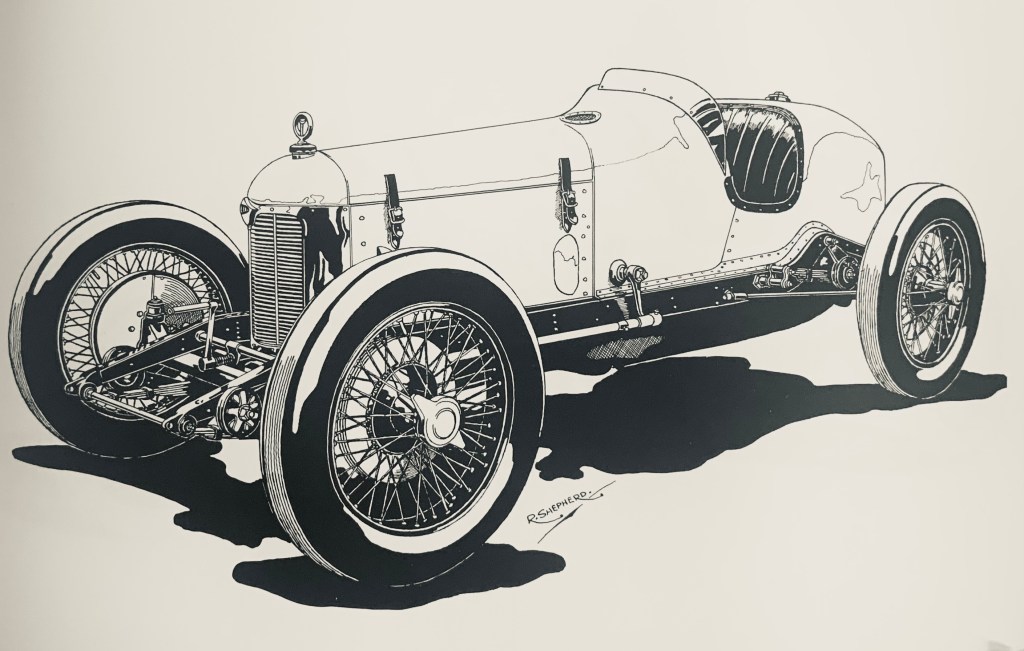
My first exposure to Bob Shepherd’s artistry was in the first issue of the late Barry Lake’s marvellous and way too short-lived Cars and Drivers magazine published in early 1977.
John Medley chose a Shepherd drawing of a Miller 122 to support an article he wrote about the ex-Zborowski machine which raced in New Zealand, and briefly in Australia pre-war, after the untimely death of the wealthy Briton at the wheel of a Mercedes during the 1924 Italian GP.
I’ve always been blown away by Shepherd’s work when I have tripped over it. Discussions with Bob King about the Miller led us to his copy of Graham Howard’s book (Racing Cars Through The Years) of Shepherd’s drawings published in 1993. Diana Davison/Gaze made available the Davison Family Collection of Shepherd images to Howard to allow the book to be published.
So little is known about Bob Shepherd we figured it was time to put something on the record more widely available than those lucky enough to have a copy of that marvellous book.
I asked Bob to do a bio, but after re-reading Graeme’s Introduction in the book, he said “How can I top that!”
So, here it is, Howard’s words shortened only a smidge, and a small selection of drawings which I think demonstrate Bob’s mastery of his art. The descriptions of each car are exactly as they appear in the book.

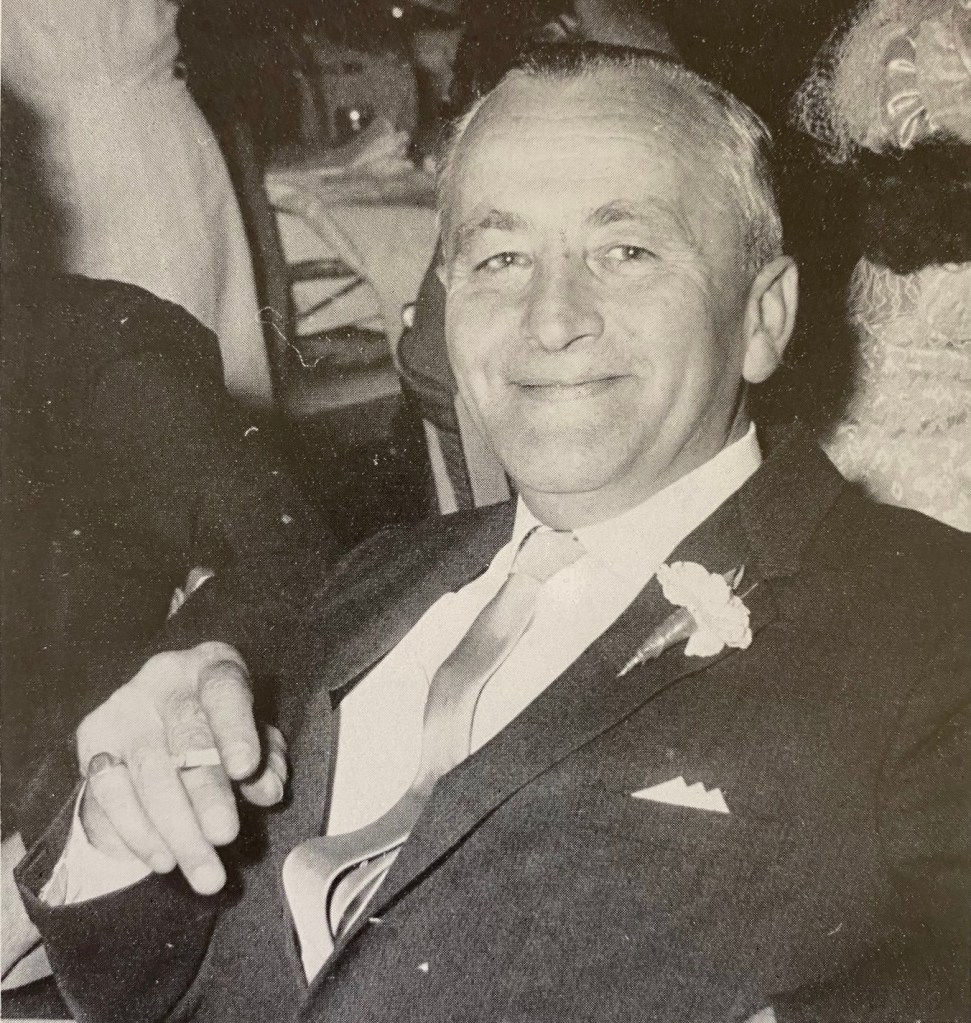
“To countless Australians Bob Shepherd the artist was also Bob Shepherd the historian, primarily because of the series of articles he wrote and illustrated for the magazine Australian Motor Sports, starting in August 1946 and continuing for than 15 years.
With a distinctive combination of knowledge, passion and flair, he carried his audience into the magic world of the racing and high performance cars of Europe and (to a lesser degree) America, broadly from the time of the French Grands Prix through to the end of the 1930s. Month by month, car by car, Shepherd spread before his readers the treasures of the Vintage era and the legendary cars of the 1930s which laid the foundations for post-WW2 motor racing. Over the years he gave AMS readers an education in motoring history unrivalled anywhere in the world.
Not that he confined his energies to Australia. He sent drawings overseas to MotorSport and to the Bugatti Owners Club journal Bugantics and was singled out by British engineer-historian Laurence Pomeroy, in the second edition of his milestone book The Grand Prix Car, for having been particularly helpful in suggesting improvements and corrections to the original work. The significance of this acknowledgement needs to be emphasised – that, while far removed from the Northern hemisphere’s factories, archives and authors, Shepherd was nonetheless the master of details which had eluded even the most eminent of British motoring historians.
Even more remarkable was that Shepherd had no formal training, either as an engineer or as an historian, or for that matter as an artist. The writing and illustrating of his monthly AMS pieces, and the maintenance of his correspondence with enthusiasts around the world, was done from the lounge room of his house in the time he had spare from family life and his job as a stores clerk.

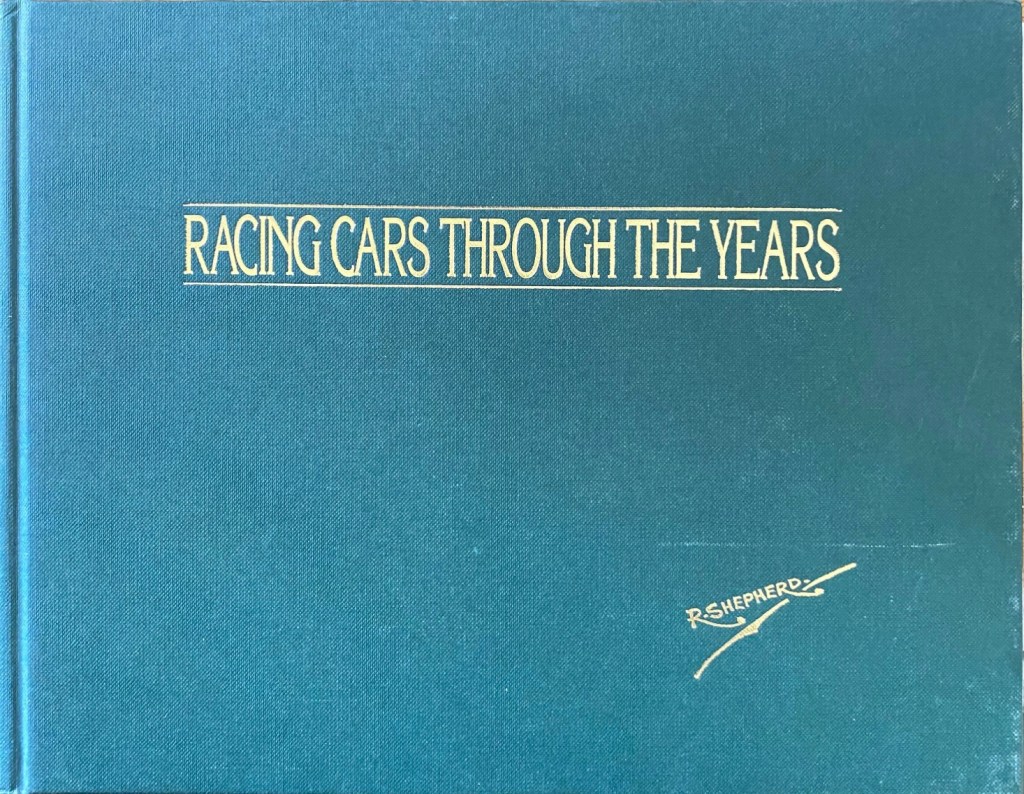
He was born in 1914 in the Sydney suburb of Pagewood, where his father was a hairdresser. He was the oldest of three children; he and his brother Sydney were each dux of Daceyville Primary School in their respective years, and Bob was later also dux of Cleveland Street High School, but university was out of the question. Cars and drawing were his great interest, but work in the motor trade was impossible to find: eventually a family friend heard of a job at Davis Gelatine, and he worked there until his retirement in 1979, holding a staff position from 1964. He married Joan Manhood in 1940, they had three children.
As a schoolboy Shepherd had started writing to overseas car manufacturers for catalogues; these catalogues, his voluminous international correspondence, and dissected copies of The Motor, The Autocar and MotorSport formed the basis of his archives, kept in rows of manila folders in large glass-fronted cupboards.
His drawings were made using the simplest of methods and materials. A pencilled grid, or a pair of dividers, would be used to transfer dimensions and proportions from the chosen source photograph onto a sheet of his favourite cartridge paper, and the drawing would start in HB pencil, which would be rubbed out after the final version had been inked-in using mapping pens. All his work was freehand – there were no rulers or artificial aids like French curves. He did most of his drawings on Sundays after church, working for four to five hours, resting his paper on a wooden board and taking advantage of natural light. It would usually need two Sundays to produce a drawing; those for AMS were sent to Melbourne (always by registered mail) in cardboard cylinders accompanied by the text for his article which – like his letters – would be written in copperplate script, blue ink on unlined paper.
He was not comfortable drawing vehicles in action, or drawing people, and he showed no interest in drawing aircraft or motorcycles. Almost all his work was black and white: AMS itself was not printed in colour. In some drawings he used a wash, rather than hatching, to provide shading: when he did use colour, for example for private commissions, it was with complete success. His black box of watercolour pigments, bought when he was 12, is still in use by one of his grandchildren.


As well as his work for AMS, he provided illustrations for many club magazines and illustrated ‘Vintage Types’ for the Vintage Sports Car Club of Australia, he was one of its founding members. His first published drawings may have been the series ‘Australia’s Best Known Speed Cars’ in Motor in Australia and Flying in 1939. He was sometimes asked to suggest shapes for rebuilds or of new racing cars. As a boy he had watched racing on the banked concrete saucer at Maroubra but went to few race meetings in later years. More surprisingly, he never owned a car (although he had part shares in several), seldom drove, and did not hold a licence, he never travelled outside New South Wales.
Yet he was in no way reclusive or narrow in his interests. While a reluctant partygoer, he was a most entertaining teller of stories, had an astonishingly broad general knowledge, was a keen reader, loved opera (he did his drawings with ABC radio playing) and was well enough known as a fisherman for there to be an unofficial ‘Shepherd’s Rock’ at nearby Kurnell.
There was little to single out the family house in Maroubra Bay Road. Shepherd took his research seriously – he shared in some ferocious debates in his correspondence columns – but there was absolutely no pretence; there was nothing in his manner to hint that here was one of the foremost authorities on motoring history. Joan and Bob Shepherd made everyone most welcome, whether they were famous names or awed tram-travelling young admirers (for which all those young admirers remain very grateful).
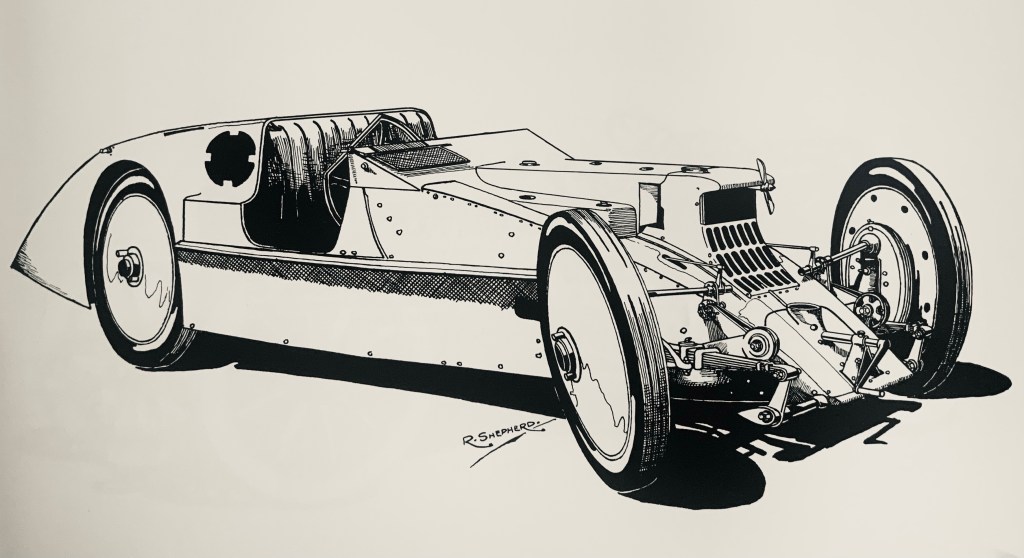

Like many remarkable people, Bob Shepherd was a paradox. He almost never drove a Vintage car, seldom went to the Vintage club meetings, yet was – without realising it – the Australian Vintage movement’s finest publicist. He never travelled outside Australia, never saw any of his beloved cars in their heyday, yet he knew them in minute detail and could picture them with elegant clarity. He had rare gifts yet remained a modest and gentle man. With this book we remember that man.”
Graham Howard, Sydney, 1993.
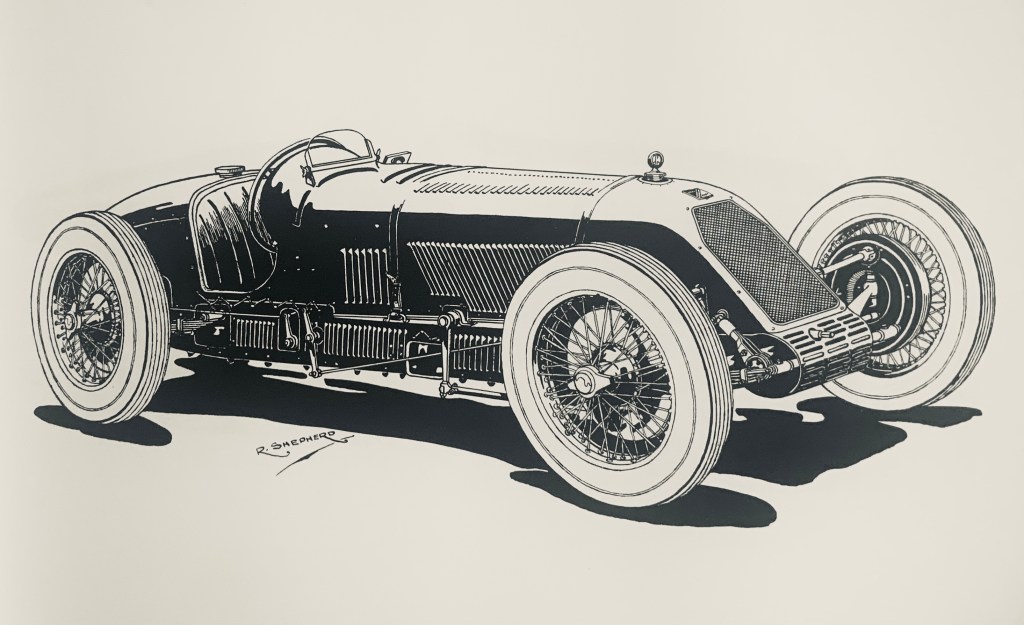
Talbot-Darracq 1.5-litre, 1926 (above). Continuing Darracq’s pre-1914 racing tradition, the company’s cars for the 1926 1.5-litre formula were 140bhp supercharged twin-cam straight-eights (56mm x 75.5mm, 1488cc). Engine and gearbox were slightly offset to the drivers left. A much modified version of one of these cars (still in 2021) survives in Australia, imported after WW2. The drawing appeared in the October 1951 AMS.
Oops, nearly forgot the Miller 122 at this pieces outset. Miller, 1923. Influenced by Fiat, Harry Miller used two valves per cylinder in hemispherical chambers when he scaled down his 183-cubic inch straight-eight for the 122-inch (2-litre) limit applying from 1923, obtaining an unrivalled 120bhp. Supercharged from 1924, and reduced to 91c.i. from 1926, these engines won Indianapolis in 1923, 1926, 1928 and 1929. That drawing appeared in the April 1957 AMS.
Credits…
‘Racing Cars Through The Years’ Bob Shepherd and Graeme Howard, Bob King Collection, David Zenuert Collection
Tailpiece…
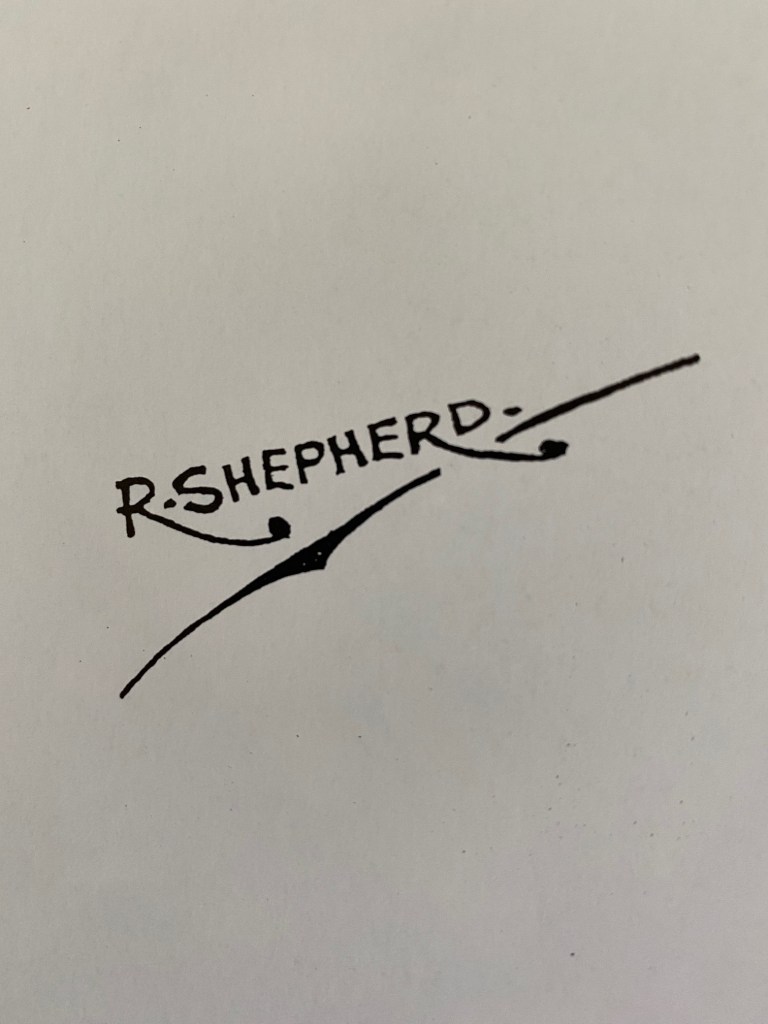
Finito…
Well Done. A remarkable man and book. John H
A fabulous article Mark & what a fascinating Man . I’m betting all your readers are now ” Googling ” – Bob Shepherd in hope of finding his book ! . Best regards , Brian .
Thanks Brian,
Great to bring a quiet achiever to the attention of a wider audience. I’m sure if he was a Brit he would be up there with some of the illustrator greats.
Not sure how many copies of the book were printed, not many tho!
m
Thank YOU Mark & Bob for this wonderfull tribute to Bob Shepherd : D.Z.
[…] Ron’s minimal captions include: ‘Maseratti’ (wrong), ‘1 1/2-litre chassis’ (correct) and ‘4CL Maserati (Brooks) Adelaide 1939’. The latter tells us it is the Wakefield car – he got the 4CL bit wrong – albeit the current orthodoxy is that Bill Brooks bought the car from customs in 1943. My suspicion is that Racing Ron made his notes about the photographs decades after the events themselves, the same blue biro he used throughout aids my forensic conclusion. We know from photographs in the Bob Shepherd Maserati Scrapbook – now in historian, David Zeunert’s care – that the car was not taken apart as shown in the chassis shots in 1939. More about Bob Shepherd here; https://primotipo.com/2021/12/03/werrangourt-archive-13-bob-shepherd-artist-extraordinaire/ […]